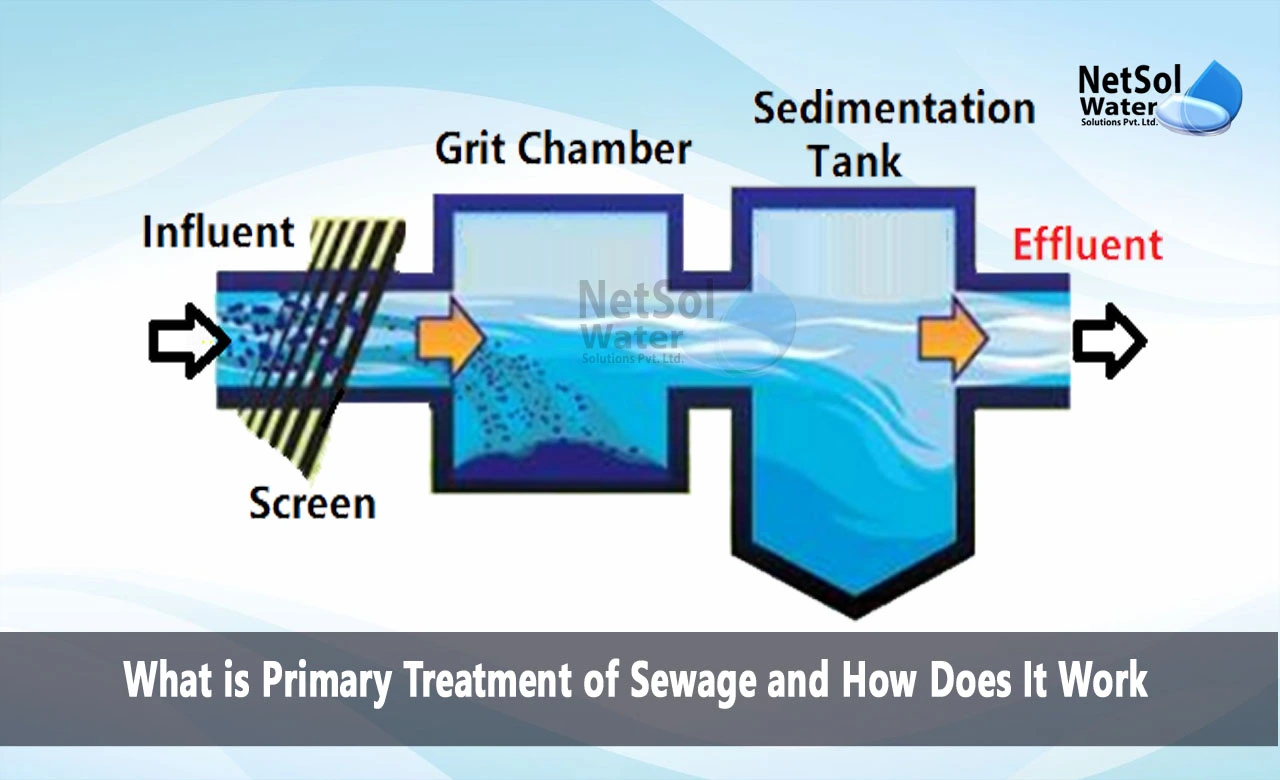What is Primary Treatment of Sewage and How Does It Work?
Sewage treatment is a crucial process that aims to remove contaminants from wastewater before it is discharged into the environment. Primary sewage treatment is the first stage of the treatment process and plays a vital role in mitigating the harmful effects of untreated sewage on water bodies and public health. We will learn the details of primary sewage treatment, exploring its purpose, processes, and significance.
The Need for Sewage Treatment
Before delving into the specifics of primary sewage treatment, it is essential to understand the necessity of sewage treatment as a whole. Untreated sewage contains a myriad of pollutants, including organic matter, suspended solids, pathogens, and toxic substances. These contaminants can have devastating effects on aquatic ecosystems, degrading water quality, depleting oxygen levels, and posing significant risks to human health.
Overview of Primary Sewage Treatment
Primary sewage treatment is the initial stage of the sewage treatment process, designed to remove a substantial portion of the suspended solids and organic matter present in the wastewater. This treatment phase typically involves physical processes, such as screening, grit removal, and sedimentation, without relying on biological or chemical treatments.
Screening and Grit Removal
The first step in primary sewage treatment is screening, where large debris and objects are removed from the wastewater. This process involves passing the sewage through screens or bars, which trap and separate larger solids, such as rags, plastics, and other unwanted materials. Following screening, grit removal takes place, where heavy inorganic particles like sand, gravel, and cinders are separated from the wastewater. These particles can cause abrasion and damage to equipment if left in the sewage.
Sedimentation Tanks
The heart of primary sewage treatment lies in the sedimentation tanks, also known as primary clarifiers or settling tanks. These tanks are designed to slow down the flow of wastewater, allowing suspended solids to settle at the bottom due to gravitational forces. The settled solids, referred to as primary sludge, are periodically removed from the bottom of the tank for further treatment or disposal.
Skimming and Oil Removal
In addition to solid removal, primary sewage treatment may also include skimming and oil removal processes. Skimming involves removing floating materials, such as grease, oils, and other buoyant substances, from the surface of the sedimentation tanks. These substances can be detrimental to downstream treatment processes and need to be removed before further treatment.
Efficiency of Primary Sewage Treatment
Primary sewage treatment is effective in removing a significant portion of suspended solids and organic matter from the wastewater. Typically, this treatment stage can remove up to 60% of suspended solids and 30-35% of the biochemical oxygen demand (BOD), which is a measure of the organic matter present in the wastewater. However, primary treatment alone is not sufficient to meet stringent environmental regulations, and further treatment stages are required.
Advantages and Limitations
Primary sewage treatment offers several advantages, including:
1. Reduced load on subsequent treatment stages
2. Removal of potentially harmful solids and debris
3. Cost-effectiveness compared to advanced treatment methods
However, it also has limitations, such as:
1. Inability to remove dissolved organic matter, nutrients, and pathogens
2. Limited treatment efficiency for certain types of contaminants
3. Requirement for further treatment stages to meet discharge standards
Sludge Handling and Disposal
Primary sewage treatment generates a significant amount of sludge, which is the solid material removed from the wastewater during the sedimentation process. Proper handling and disposal of this sludge are crucial to minimize environmental impacts. Common sludge handling methods include thickening, stabilization, dewatering, and subsequent disposal or beneficial reuse, such as land application or incineration.
Conclusion
Primary sewage treatment is a fundamental step in the overall sewage treatment process, serving as the initial line of defense against the detrimental effects of untreated sewage on the environment and public health. While it effectively removes a substantial portion of suspended solids and organic matter, further treatment stages are necessary to achieve higher levels of purification and meet stringent discharge standards. By understanding the processes, advantages, and limitations of primary sewage treatment, we can better appreciate the importance of comprehensive wastewater management and its role in protecting our water resources and ecosystems.
Netsol Water is Greater Noida-based leading water & wastewater treatment plant manufacturer. We are industry's most demanding company based on client review and work quality. We are known as best commercial RO plant manufacturers, industrial RO plant manufacturer, sewage treatment plant manufacturer, Water Softener Plant Manufacturers and effluent treatment plant manufacturers. Apart from this 24x7 customer support is our USP. Call on +91-9650608473, or write us at enquiry@netsolwater.com for any support, inquiry or product-purchase related query.



